Yao Wan ancient town
Yao Wan ancient town
Yaowan Ancient Town is located in the southwest edge of Xinyi City, Xuzhou City, Jiangsu Province, at the junction of Beijing-Hangzhou Grand Canal and Luoma Lake, and is connected with Suqian, Suining and Pizhou.
Yaowan Ancient Town dates back to the Spring and Autumn Period. It has a history of more than 1300 years since it was built in 618 in the Tang Dynasty. Ancient town west of the Grand Canal, east of Luoma Lake, surrounded by water on three sides, for the North-South water transport hub and an important commodity distribution center. The prosperity of water transportation led to the rapid prosperity of industry and Commerce in Yaowan. During the period from Qing Dynasty to the Republic of China, there were 8 provincial capitals and 10 national commercial agencies in the ancient town. Businessmen and missionaries from the United States, Britain, France and Italy came to Yaowan to conduct business and preach. There are more than 360 shops and workshops in Qianzhuang, Buzhuang, Pawnshop, Shop, etc.
The main scenic spots of the town are Wujiayuan, Zhao Xinlong Sauce Garden, Chinese Pawn Museum, Yaowan Folklore Museum, Daqing Yaowan Post Office, Jiangxi Guild Hall, Shanxi Guild Hall, Suzhenyang Guild Hall, Catholic Church and more than 10 scenic spots.
Yaowan Ancient Town is known as "looking East at the sea, west at Pengcheng, looking south at Huaishi, looking north at Taidai". It is known as "Golden Triangle of Golden Waterway", "North Jiangsu waters win the south of the Yangtze River" and "Small Shanghai", and it is a national AAAA AAAA-level tourist attraction.
Development history
According to the records of the ancient books, this place was under the jurisdiction of Zhongwu during the Eastern Zhou Dynasty. In Qin and Han Dynasties, it was used as a kiln for military supplies. In the Tang Dynasty, it was located at the junction of Pizhou and Haizhou. Because of many kilns around it, it was called Yaowan.
Yaowan was formed in the Spring and Autumn Period and the Warring States Period, and flourished in the Ming and Qing Dynasties and the Republic of China. It used to be an important Wharf on the Grand Canal of Beijing and Hangzhou, and an important commodity distribution center in northern Jiangsu and southern Shandong. Eight provinces throughout the country have chambers of Commerce here, and 10 provinces have commercial agencies here.
Eastern Zhou period
During the Eastern Zhou Dynasty, the area was under the jurisdiction of Zhongwu. In 618 AD, the Tang Dynasty implemented the system of prefecture and county, Yaowan Town, the first corner town. After the Tanlu earthquake in 1668, the town of Yutou was destroyed and moved to the corner of Zhennan Canal to build kilns to burn bricks and rebuild the new town. In the past, ships mostly moored here. Yaowan got its name.
The early Tang Dynasty
The ancient town was built in the early Tang Dynasty. With the prosperity of water transport and salt industry in Ming and Qing Dynasties, there were numerous shops, businessmen and businessmen gathered in the streets, and people like knitting, boats on the water were continuous. In ancient towns, city gates, buildings, stores, courtyards, palaces, temples, temples and palaces were built from the Song Dynasty to the Qing Dynasty. Ancient towns such as streets, houses, guildhalls, workshops, businesses, warehouses, pawns and wharfs still exist in the past.
Ming and Qing Dynasties
At the end of the Qing Dynasty and the beginning of the Republic of China, there were more than 360 businesses, factories and workshops in Yaowan Town, of which 13 were Qianzhuang. Goods from the three eastern provinces are exported to Nanyang, Singapore, Taiwan, Japan and other places through Yaowan Bay. Businessmen and missionaries from Britain, France and the Netherlands came to Yaowan to do business and preach. At that time, there were foreign companies such as Mobil Oil Company, Asia Oil Company and Wuyang Department Store in the town. Foreign motorboats and domestic small cargo ships shuttle at Yaowan dock. The river is crowded with masts and the streets are crowded with people, which can be said to be extremely prosperous for a time. At that time, there were more than 8000 shops, houses, churches and temples.
Relying on the advantages of water transportation, Yaowan has gradually developed into an important wharf and commercial town on the Grand Canal of Beijing and Hangzhou. During the peak period of water transport in Ming and Qing Dynasties, Yaowan was a key land and water area between the north and the south. Ships from South to Suhang and from North to Beijing and Tianjin had flourished in industry and Commerce for a time. At the beginning of the Republic of China, the resident population of the town reached 30,000, and the floating population reached 15,000, so it was called "small Shanghai" for a time.
Among them, there are many famous pawnshops, troughs, money banks, grain banks, boutiques and inns. Joint ventures include Sino-US Joint Venture Mobil Oil Company, Sino-British Joint Venture Asia Petroleum Company, Sino-French Joint Venture Wuyang Department Store Company, Sino-British Joint Venture Egg Whitening Factory, etc. At that time, silver tickets in Yaowan Pavilion could be converted into cash at designated banks in 18 provinces of China. There are 8 provincial chambers of Commerce in Jiangxi, Shanxi, Shandong, Henan, Hebei, Anhui, Fujian and Suzhenyang provinces, 10 provincial commercial agencies in Qinghai, Zhejiang and East provinces, and 2 churches and 8 temples in Zhenli. The town has nearly 100 businessmen and missionaries from the United States, Britain, France, Russia, Italy, the Netherlands, Canada and other countries. Most of China's provinces and more than 10 countries in the world have trade with Yaowan.
Republican Period
Shops and shops in Yaowan Ancient Town Scenic Spot are mostly located in two ancient town streets, West Street and Zhongning Street.
Ancient towns have won many honors: in October 2010, Yaowan Ancient Town was rated as a "historic and cultural town" by the Jiangsu Provincial Government. At present, the declaration of "national historic and cultural town" has been completed.
Mainstream film and television media such as CCTV and Jiangsu TV have reported on the achievements and work experience of tourism development in ancient towns. In 2010, seven CCTV "Rural" columns broadcast the feature film "Wen Xiangxue Ancient Town". In 2012, seven sets of CCTV's "Rural Covenants" program group entered Yaowan, recording special films on ancient towns and broadcasting them in seven sets of prime time in the central government. Newspapers such as Xinhua Daily, Nanjing Daily, Xuzhou Daily and Metropolitan Morning News have published articles such as Who Cheers for Yaowan, Yaowan: Restoring Landscape and Changing Life, and reported in detail the tourism culture of the ancient town.
Central New Film International Microfilm Channel Union Yaowan Ancient Town Film Base
China Television Artists Association Yaowan Ancient Town Filming Base of Agricultural Television Commission
Yaowan Ancient Town Filming Base of the Microfilm Committee of China Television Artists Association
geographical position
Yaowan Town is located in the southwest edge of Xinyi City which belongs to Xuzhou City. At the junction of Beijing-Hangzhou Grand Canal and Luoma Lake, it is surrounded by water on three sides (Luoma Lake in the east, Grand Canal in the west, and Laoyi River crossing). It is connected with Suqian, Suining and Pizhou. It is an ancient water town with a thousand-year history and is well-known throughout the country.
Beijing-Hangzhou Grand Canal in the west, Luoma Lake in the east, 48 kilometers from Baitabu Airport in Lianyungang and 38 kilometers from Guanyin Airport in Xuzhou, and Yaowan entrance and exit of Xulian Expressway are specially set up. The traffic is very convenient.
Main attractions
Yaowan Ancient Town has its unique ancient architectural style, water scenery beside rivers and lakes, rich and ancient historical and cultural relics. Ancient dwellings, streets, shops, wharfs and relics create the cultural taste and connotation of Yaowan ancient town, which is a true portrayal of the ancient canal culture inherited among the people. The ancient town is surrounded by water on three sides, sparkling green waves and beautiful scenery; the streets and alleys are unique, with green bricks and grey tiles in courtyards, staggered pavilions and pavilions, roof eaves and warping angles, which is known as the first ancient town and tourist attraction of the Grand Canal in China.
Yaowan "Night Cat Subset"
Yaowan still retains a traditional morning market known as the "Midnight Opening, Dawn Strike" - the "Night Cat Collection".
The formation of night owl subset is mainly related to canal transportation. After the opening of the Central Canal, ships from south to North passed through Yaowan. The water level of the canal is shallow to the north of Yaowan Bay, so it can only sail empty boats, while the water level of the canal to the south of Yaowan Bay is deep and feasible for cargo ships. Therefore, whether the products from the South or from the North need to be loaded and unloaded in Yaowan. In the long run, Yaowan has become an important drought and flood terminal of the Grand Canal. Traffic was limited and merchant ships could only sail during the day. After the merchant ship docked at Yaowan at night, the porters loaded and unloaded the cargo, supplemented the food, and the boatmen had enough daily necessities. Therefore, in the middle of the night every day, peddlers and residents from all directions come to Yaowan Street Market to start small business. Chaobai, steaming steamed buns, burning spicy mum paste, people pick vegetables by hand electricity, and select fish by light. After daybreak, the merchant ships set sail, and the people who were in the market gradually dispersed. So day after day, year after year, the bustling and lively, has been spread to today. Because it opens in the middle of the night and ends at dawn, people call it the "Night Cat Subset" vividly.
Wu family courtyard
Wujiayuan was built in the reign of Kangxi in the Qing Dynasty (1671). It has a history of more than 300 years. It is the most complete house preserved in the ancient town of Yaowan and one of the main scenic spots in the town. The Wu family, originally from Fujian Province, made its fortune mainly by operating tobacco. At that time, it owned more than 500 houses and five industries. It owned more than 300,000 silver assets, known as "Wu Banjie".
In the late Ming Dynasty, the coastal areas of Fujian Province were occupied by Qing soldiers, and local officials of the Ming Dynasty were arrested for refusing to surrender the Qing troops. In the ten years of Emperor Kangxi in Qing Dynasty, the emperor granted amnesty to a group of coastal officials. Among them, Wu Dahu, formerly a sea tax official in the late Ming Dynasty, was assigned to Yaowan to settle down. Having settled in Yaowan, he started a tobacco business because he knew more about maritime trade. The Wu family operates five tobacco shops in Yaowan, the most famous of which is Wu Hongxing Tobacco Store.
The existing Wujia courtyard has four entrance courtyards. The first one is the tobacco exhibition hall, which mainly introduces the origin and development of tobacco. It shows the process from picking tobacco to the final product by means of figures, objects and murals. The second one is the location of Wu's kitchen, granary and servant's house. The third one reproduces the scene of Wu Baoting, the third generation of Wu's son, who handled the case at that time. At that time, Wu Baoting, who was in the capital from Guanzhi to Sipin, had been ordered to come to Yaowan for disaster relief, temporarily set up Xingya in Wujia Grand Courtyard, and the fourth was Wujia's master living area, which restored the scene through the decoration of antique furniture. At that time, large families were very particular about their housing and construction. To the East is a son, to the west is a lady, and to the back is usually an elder or a person of status.
Wujia Courtyard follows the architectural style of the southern coastal areas. All the houses are constructed with bright brick and wood structure, which has the function of typhoon prevention, storm prevention and theft-proof. The wall foundation is thicker and has the function of preventing cold and summer. Wu Jiayin is a big household in Yaowan, and his house is very high and low. The whole courtyard is high and low, so when you go out, you have to go up, which means that you are going up step by step.
Folklore Museum
Yaowan Folklore History Hall covers an area of 2300 square meters, which is divided into four parts: flowing water jade beads, introducing the historical origin and development of Yaowan; night owl subset, combining modern scientific and technological means such as audio, video and photoelectric effect with statues, vividly reproduces the liveliness and prosperity of Yaowan traditional early city; Changbu Huajie Street, focusing on the prosperity and prosperity of Yaowan wharf economy; Fanghua people. Sheng, exhibiting the folk customs and characteristics of Yaowan. Through the combination of art and modern science and technology, the exhibition hall displays the thousands of years of folk culture and market customs of Yaowan, an ancient town, from all directions and angles.
Zhao Xinlong Sauce Garden Shop
Zhao Xinlong Sauce Garden Shop was founded in 1623 A.D. in Mingxi Zong three years, and has a history of more than 380 years. This is one of the typical representatives of the layout pattern of "Qian Dian Hou Fang" in ancient town. Its soy sauce and sweet oil products have been used as high-grade condiments in Imperial dining rooms since the Qianlong period of the Qing Dynasty, and thus have a long reputation. The brewing workshop in the hospital follows the traditional process. The whole process of brewing was introduced in detail in the exhibition room. The store was declared provincial cultural relics protection unit by Jiangsu Provincial People's Government in 2006.
A Brief Introduction to the Catholic Church
Founded in 1909, the European Gothic style is the largest Catholic Church in northern Jiangsu. In June 2011, Luoma Lake Tourist Company invested 10 million yuan to rebuild the original site, and officially opened to the public on the eve of Christmas on December 24, 2012. The building area of the church is 2040 square meters. The spire of the twin towers is 40.6 meters high and the diameter of the bell is 1.6 meters. The sound can be transmitted 5 kilometers once an hour. The newly built church integrates Catholic architecture, culture, art exhibition, wedding photography, wedding ceremony, film projection and other functions.
Tourist guide
Tickets for scenic spots
Yaowan ancient town west of the Grand Canal, east of Luoma Lake, "the day over the mast sail thousand poles, night boat ten miles", the natural scenery is very beautiful. Locomo Lake is a provincial wetland protection park with vast smoke, blue water, lush aquatic plants and scattered islands. With its rich lake products and unique snacks, Locomo Lake attracts many tourists. Through more than three years of protection and development, Yaowan ancient town integrates ancient rhyme landscape, water rhyme landscape and human landscape. It has great value in tourism, science popularization, leisure, Archaeology and prospecting. There are numerous shops, businessmen and tourists in the ancient town. Especially Wujiayuan, Zhao Xinlong Sauce Garden, Yaowan Pawn History Hall, Yaowan Folklore Museum, Daqing Yaowan Post Office, Cultural Revolution Memory Hall, Shanxi Guild Hall, Jiangxi Guild Hall, Catholic Church, Street Building, Jiepai Building, South Sentry Gate, North Gate and many other attractions make people linger on and forget to return.
Ticket price for scenic spots: 80 yuan per person.
Official Opening Date: October 1, 2011.
Traffic Information
There are four airports around the ancient town of Yaowan: 48 kilometers east from Baitabu Airport of Lianyungang, 38 kilometers west from Guanyin International Airport of Xuzhou, one hour from Linyi Airport of Shandong Province and Lianshui Airport of Huai'an.
There are Longhai Railway, Jiaoxin Railway, Xinchang Railway to Xinyi Railway Station, Xinyi Bus Passenger Station, South Bus Passenger Station can take (Xinyi-Yaowan) bus directly, Pizhou Bus Station can also take (Pizhou-Yaowan) bus directly to scenic spot, Xuzhou Bus Passenger Station has a direct bus to Yaowan at 15:00 pm every day.
From the aspect of self-driving and tour highway: the Beijing-Shanghai Expressway, Lianhuo Expressway and Xinyang Expressway all pass through Xinyi City. The exit of Honghua Port on Beijing-Shanghai Expressway passes through Tanxin Road and Huancheng West Road to Guzhen Avenue, and the entrance of Xinyixi on Lianhuo Expressway connects with Guzhen Avenue. The entrance and exit of Ma Lingshan on Xinyang Expressway connects with Guzhen Da via 425 provincial roads. The road also goes directly to the ancient town scenic spot.
Tourist routes in scenic spots
Lock Key of Beimen - Ancient Commercial Street along the River - Crescent Bridge - Old Site of Chamber of Commerce - Frontier Archway - First Shot of Huaihai Campaign - Cultural Revolution Memory Hall - Xidang Point - Shanxi Guild Hall - Catholic Church - West Street - Daqing Yaowan Post Office - Yaowan Folklore History Hall - Zhao Xinlong Sauce Garden - Wujiayuan - Central Gun Building - Cross Street Building Site - Zhongning Street Dongdangdian - Non-Heritage Workshop - Suzhenyang Guild Hall - Jiangjiayuan - Mananpu Art Museum of Calligraphy and Painting - Jiangxi Guild Hall - Nansengmen - Grand Canal Ancient Wharf.
Honors
In October 2010, it was assessed as a "historic and cultural town" by the provincial government, and is now declaring a "national historic and cultural town".
In November 2010, it was ranked second in the "Ten Most Beautiful Canal Sceneries" by the Grand Canal Network of China.
In November 2010, Guzhen won the second place in the "Ten Most Beautiful Canal Sceneries" competition organized by the Grand Canal Network. In December 2010, he was awarded the title of "the most popular tourist attraction among the people of Xuzhou City". In 2011, it was named "China's most charming rural tourism destination". In 2012, it was appraised as "a famous tourist town with national characteristics" by the Ministry of Housing and Construction and the Tourism Bureau; in the same year, it was appraised as "China's Top Ten Villages and Towns Slow Tourist Place in 2012" and "Xuzhou City Creates a Standard-Achieving Central Town". In June 2012, it passed the acceptance of national AAAA scenic spots smoothly; in July and October of the same year, it passed the acceptance of Jiangsu Eco-town and Health Town respectively. In November 2013, he was awarded the title of "Civilized Town of Jiangsu Province".
In December 2010, it was awarded the title of "the most popular tourist attraction among the people of Xuzhou City", and in 2011 it was named "the most charming rural tourism destination in China".
In July 2012, it was appraised as "a famous tourism town with national characteristics" by the Ministry of Housing and Construction and the Tourism Bureau.
In 2012, it was named "Xuzhou City Establishes Standard-Achieving Central Town". Guzhen's specialty mung bean wine and Yaowan sweet oil are listed in the list of intangible cultural heritage protection.
In June 2012, it passed the acceptance of national 4A scenic spot
In July and October 2012, they passed the acceptance of Jiangsu Eco-town and Health Town respectively.
In 2013, we will apply for the World Cultural Heritage with the Beijing-Hangzhou Grand Canal.
In October 2010, Yaowan Ancient Town was appraised as a "historic and cultural town" by the provincial government, and is now declaring a "national historic and cultural town". Yaowan Ancient Town was appraised as a "national characteristic landscape tourism town" by the Ministry of Housing and Construction and the Tourism Bureau.
In November 2010, it was ranked second in the "Ten Most Beautiful Canal Sceneries" by the Grand Canal Network of China.
In December 2010, it was awarded the title of "the most popular tourist attraction for the people of Xuzhou City". The special products of ancient town, such as mung bean wine and Yaowan sweet oil, were listed in the list of intangible cultural heritage protection.
In October 2012, it was approved by the National Tourism Administration as a national 4A-level scenic spot, and in the same year, it was rated as "the most potential ancient town" by China Ancient Town Network.
In 2014, Jiangsu Brand Strategy Promotion Committee was rated as "Provincial Brand Service Industry".
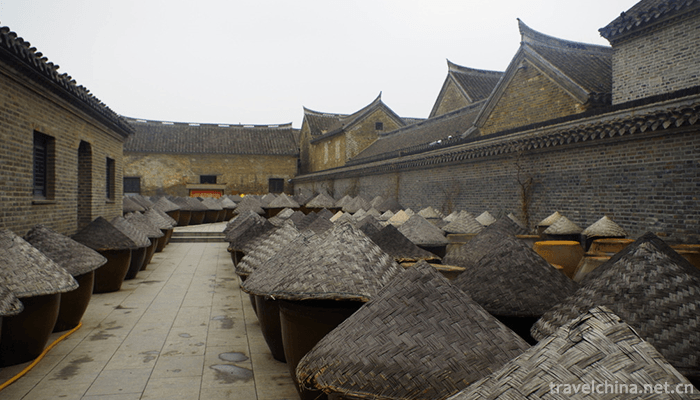
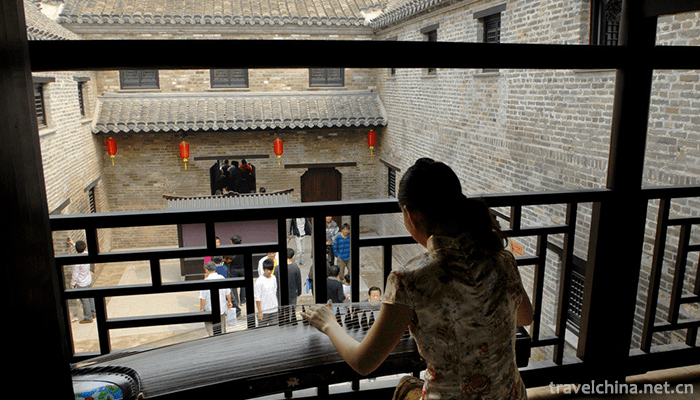
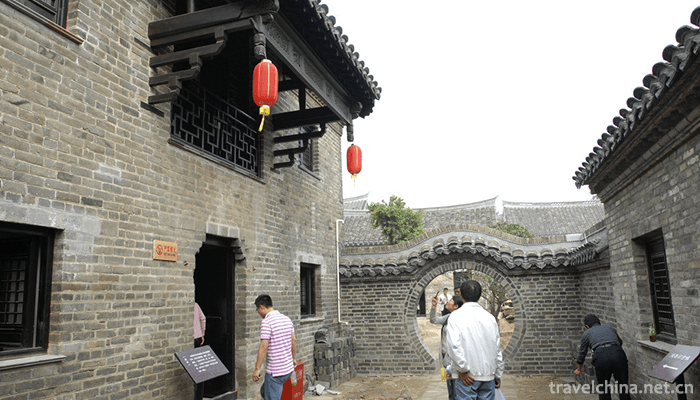
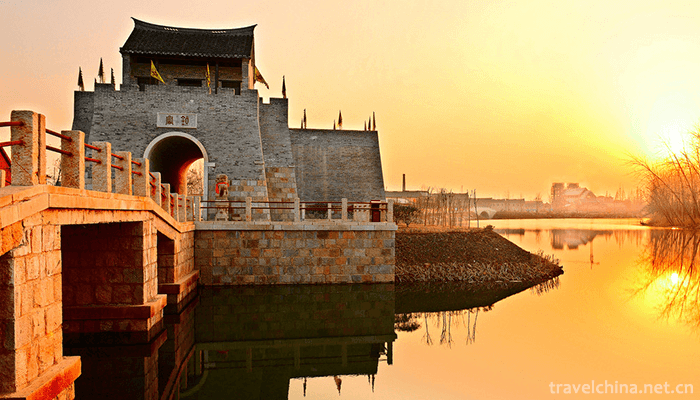
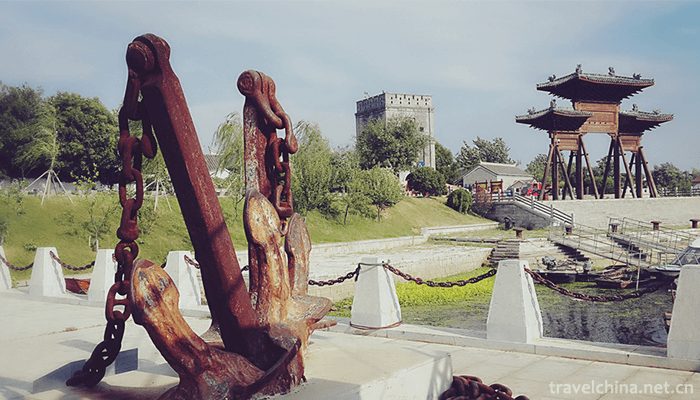

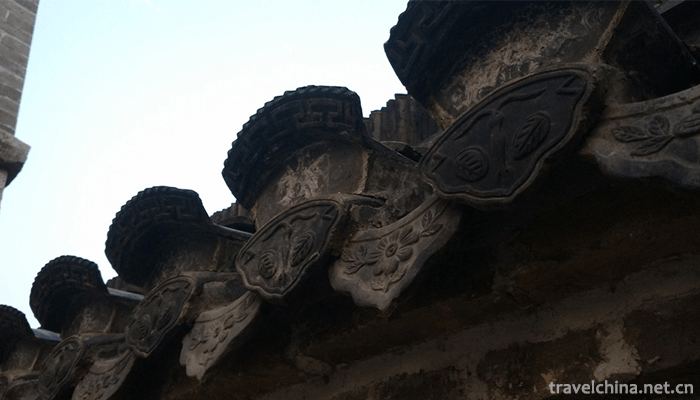
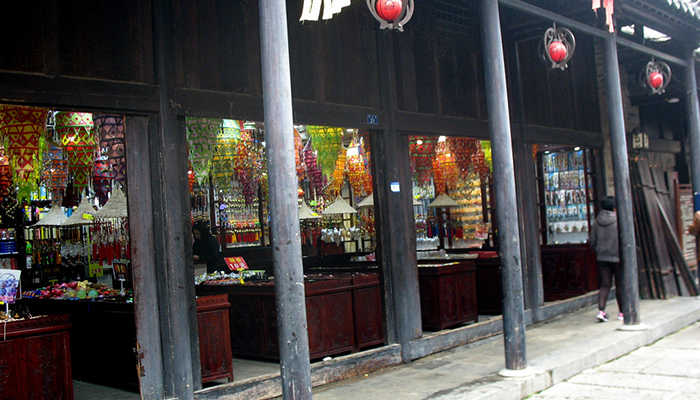
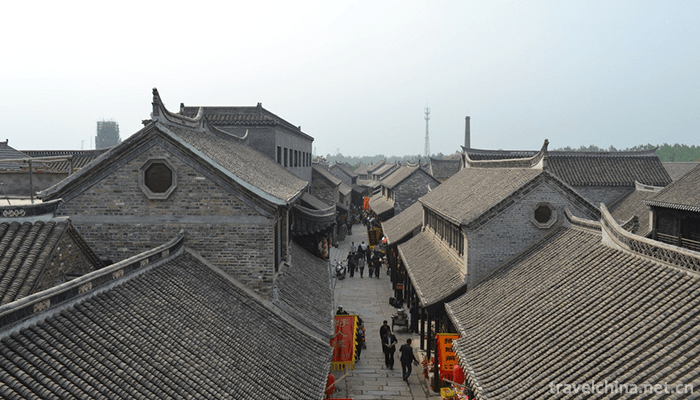
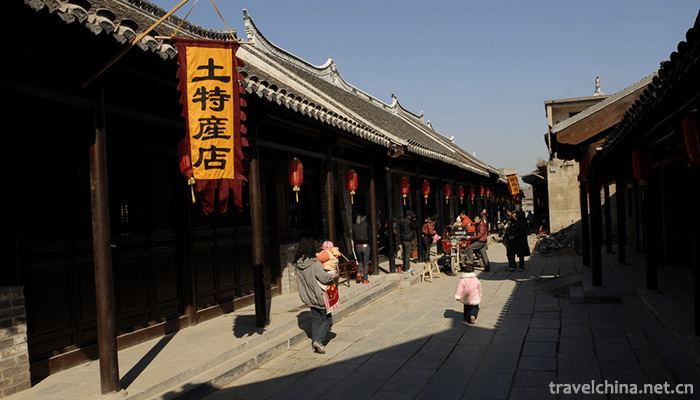
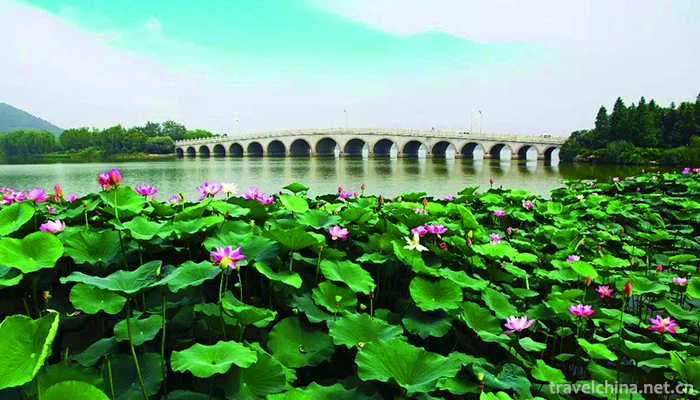
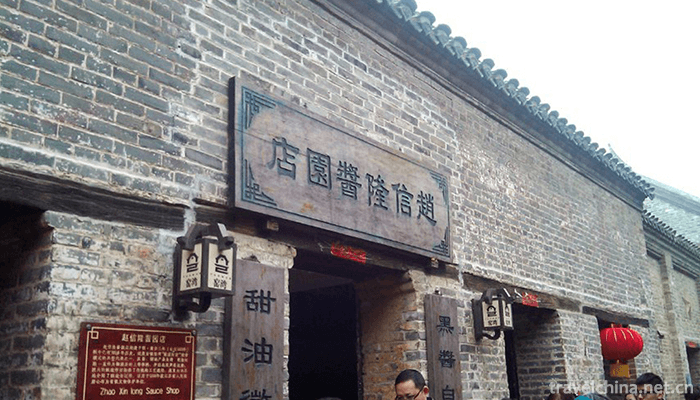
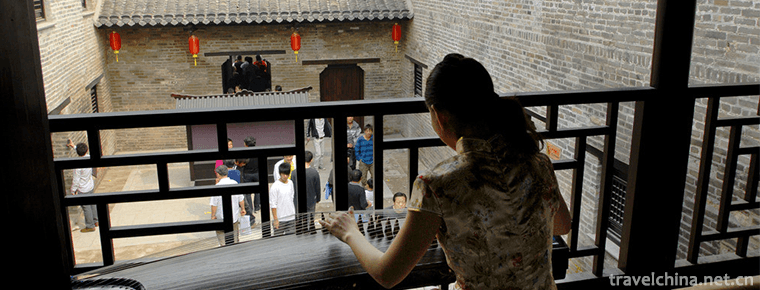
-
1.Beiting Old City Site
The site of Beiting Old Town is the ruins of Beiting Mufu in Tang Dynasty. It is located 12 kilometers north of Jimusar County Town in Xinjiang Uygur Autonomous Region. In ancient times
Time 2018-12-26 -
2.Red Liuji Scenic Area
The Red Liuji Scenic Area is located in Liuji Village, Dawang Town. In 1976, the old site of Liuji Branch of the Communist Party of China was declared as a key cultural relic protection unit at the co
Time 2019-01-16 -
3.Tianhe mountain
Tianhe Mountain, located in Xingtai City, Hebei Province, is China's Love Mountain, the hometown of Chinese Qixi Culture, and the birthplace of the legend of Cowherd and Weaver Girl
Time 2019-02-21 -
4.Shanghai Changfeng Ocean World
Shanghai Changfeng Ocean World belongs to the world's largest aquarium chain brand of Merlin Entertainment Group, which is the first and second largest in Europe
Time 2019-03-17 -
5.Production Techniques of Tibetan Mineral Plant Pigments
Since the emergence of human beings, mineral pigments have been accompanied by human beings. Mineral pigments were first used to draw murals
Time 2019-04-09 -
6.Fengyang flower drum
Fengyang flower drum is also known as "flower drum", "beating flower drum", "flower drum gong", "double drum" and so on. Fengyang flower drum originated in Linh
Time 2019-04-29 -
7.Mi Luo Tuo
Milotta is a myth and ancient song spread in the Yao nationality inhabited areas of Du'an and Bama in Guangxi. It integrates myth, creation and hero. It describes the heroic achievements of the goddes
Time 2019-06-04 -
8.opera sung in southern tunes
Southern Opera is the earliest mature type of drama in the history of Chinese opera. From the end of Northern Song Dynasty to the beginning of Ming Dynasty (12th to 14th centuries), Southern Opera was
Time 2019-06-07 -
9.Trichord Dance of Yi Nationality
Trichord dance of the Yi nationality is a folk dance handed down from generation to generation by the people of the Yi nationality. Different areas or different tribes of the Yi nationality have diffe
Time 2019-07-12 -
10.Guangxi drama
One of the local operas of the Zhuang nationality in Guangxi. Yongju Opera belongs to the Pihuang Vocal Tune System, which originated in Hunan. It was formerly called Guangju Opera, Old Opera, Local O
Time 2019-07-14 -
11.Cai Jing
Cai Jing (February 14, 1047 - August 11, 1126), character length, Northern Song Dynasty Prime Minister , calligrapher, Xinghua Army Xianyou County cixiao Li Chi Ling (Xianyou County, Putian City, Fuji
Time 2019-09-14 -
12.Mianyang economy
In 2019, the gross domestic product (GDP) of Mianyang City will reach 285.620 billion yuan, which will increase by 8.1% according to the comparable price. The growth rate is 0.6 percentage points higher than the average level of the whole province.
Time 2020-12-14